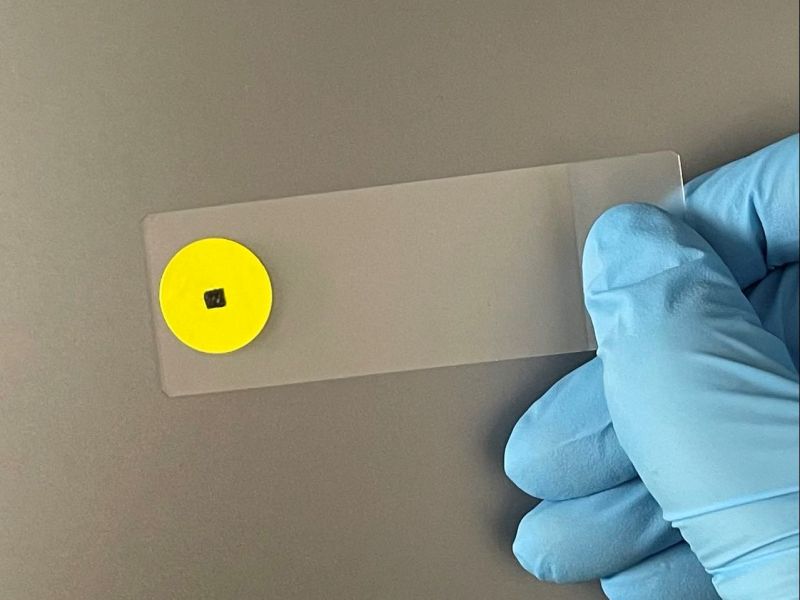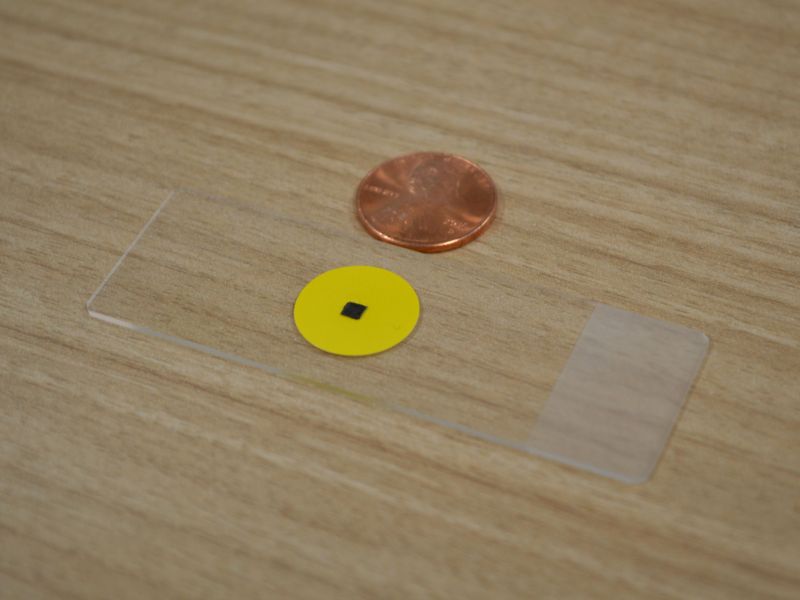Product information
- Material: Conducting polymer
- Size: 2 mm x 2 mm
- Thickness: 500 nm
- Excitation wavelength: 532 nm
- Enhancement factor: 106 or larger
- Price: Please contact us for a quote.
- Supplemental: The excitation wavelength should be chosen carefully to optimize the charge-transfer resonance between the SERS substrate and a molecule under test for optimum SERS performance.
- Specification sheet:

Overview
The conducting polymer SERS substrate provides not only high signal enhancement due to its strong broadband charge-transfer resonance for large chemical enhancement (as opposed to electromagnetic enhancement in traditional metal-based SERS substrates), but also extraordinarily high reproducibility or substrate-to-substrate, spot-to-spot, sample-to-sample, and time-to-time consistency in SERS spectrum (which is not possible with traditional metal-based SERS) due to the absence of "electromagnetic hot spots" by making the entire surface of the substrate "chemically hot", high durability due to no oxidization, and high compatibility to biomolecules due to its fluorescence quenching capability.
Applications
- Lipid biopsy
- Urine drug testing
- Toxic material detection
- Identification of compounds in tablets
- Pesticide residue inspection
- Microplastic detection
- Infectious disease sensing
- Blood glucose sensing
- Tear glucose sensing
References
- Chen et al., “Porous carbon nanowire array for surface-enhanced Raman spectroscopy”, Nature Communications (2020)
- Pancorbo et al., “Metal-free SERS: where we are now, where we are heading”, Europhysics Letters (2022)

